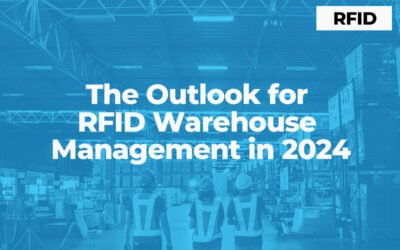
As we have all seen, the business world is growing increasingly remote. Companies are searching for innovative ways to monitor their physical assets.
This is why many executives are taking advantage of the Internet of Things (or IoT) and investing in enterprise asset management (or EAM) software solutions. In fact, companies are implementing EAM solutions at a Compound Annual Growth Rate of 8.7%. Compared to USD 3.3 billion in 2020, companies are predicted to invest USD 5.5 billion in EAM solutions by 2026. This is why visibility, efficiency, and productivity, are vital to every company that wants to prevent shrinkage, expiration, and other losses.
Here’s how:
Visibility
Problems like excessive segmentation within verticals, as well as siloing departments, causes information isolation, which, in turn, can prevent “efficient management of assets throughout their life cycle.”
A study showed that “86% of polled executives and employees blame a lack of collaboration or bad communication for team problems and failures.” (see sources below)
Most industries deal with physical assets, some of them extremely valuable. While for generations, they have been managed with a pen, paper, and clipboard (or Excel sheets), the flaws in manual asset management are becoming apparent to more and more business leaders. Human error and simple lack of live intel on inventory or equipment are not processes that a manual approach can fix.
And to top it all off, more and more executives (and employees in general) are no longer working on-site. Covid-19 and weather disasters (like the one that hit Texas in February 2021) have made it necessary for many to work remotely. While the pandemic may feel to be a thing of the past, “[m]ore than half of the employed adults who say that their job responsibilities can mostly be done from home (54%) say that, if they had a choice, they’d want to work from home all or most of the time when the coronavirus outbreak is over.” The numbers of voluntary work-from-home employees may continue to increase, as the UpWork “Future of Workforce Pulse Report” shows that by 2025, 36.2 million Americans will be working remotely.
This all means knowing the location, custody, and condition of company assets will be increasingly difficult without a cloud-based solution providing real-time visibility. With this live data, reporting and analytics make insights available to drive the best possible decisions on all leadership levels. It is difficult for leaders to make good decisions without in-depth, down-to-the-second insight. Without visibility, a company is flying blind.
Efficiency
Everyone has room to improve when it comes to efficiency, especially in large businesses. Both large-scale and small-scale efficiency issues can be eliminated by the insight an EAM system gathers and can be made meaningful by a well-integrated EAM system.
These decisions can take the form of decreasing overhead. In 2016, US Manufacturers faced losses of up to $260,000 per hour through unplanned downtime. This issue often stems from easily prevented equipment breakdown, especially in construction. When scheduled maintenance and replacement are part of an asset management plan, construction companies can save on work hours lost. Yellow iron does not need to stay out-of-service when planned downtime prevents interruptions in schedules. The equipment also lasts much longer with predictive maintenance scheduling. By sending timed or mileage-based alerts, leaders can always know how much use a piece of equipment has undergone and when it will require servicing, preventing wasted funds in replacing machinery.
Productivity
Organizations that upgraded to EAM cloud solutions experienced a 20% productivity increase.
Here are five ways that EAM solutions boost productivity in the workplace:
- Knowing the proximity, position, and placement of physical assets is the key to organizing your company’s daily operations.
- Longer equipment lifespans – Asset life extension is the new normal. In the old days, companies would run their assets into the ground, so an asset’s lifespan consisted of the time it took to depreciate until it was unusable. Now asset lifespan extends only until the cost of maintenance exceeds its current value. New IoT-based technologies make it easy to view an asset’s exact value in real-time, based on mileage, last maintenance date, and other indicators. Now that maintenance schedules (complete with alerts and notifications) are cloud-based, as well as other performance indicators, the cost and value of an asset can be easily evaluated.
- Tracking Personnel – Labor management features enable a company to know who is where, with RFID or GPS-enabled tags attached to vehicles, hard-hats, badges, etc. When you know where employees are, people can be assigned where they are needed most.
- Facility management – Smart facilities not only ensure that every crate of inventory is accounted for but that employees know exactly where to look for each piece of inventory or equipment.
- Work Order Management – To give employees tools to manage every work order is to boost team effectiveness and to cut out human error. Tracking tags and comprehensive applications can follow a work order from start to finish. Work order notifications can automatically assign the closest technician to a job based on proximity and whether their equipment is correct for the job. Because of the positive impact on a company’s use of resources and preservation of assets, the cost of implementing an EAM solution is becomes outweighed by the value saved.
Sources:
- The global Enterprise Asset Management (EAM) market size is expected to grow at a Compound Annual Growth Rate (CAGR) of 8.7% (globenewswire.com)
- https://blog.trello.com/tips-to-improve-cross-team-collaboration
- https://www.pewresearch.org/social-trends/2020/12/09/how-the-coronavirus-outbreak-has-and-hasnt-changed-the-way-americans-work/
- https://www-stage.infor.com/en-gb/blog/embrace-the-human-side-of-maintenance-technology-and-productivity-2


